
|
| Accept Cookies | Customize | Refuse Cookies |
Romanohouse www.juzaphoto.com/p/Romanohouse  |
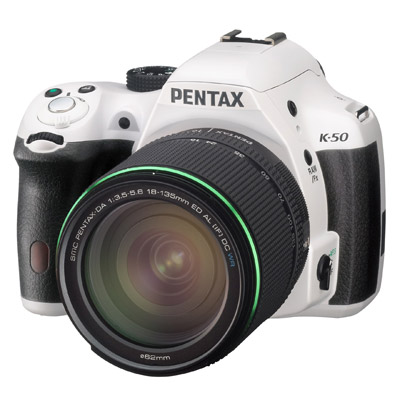 | Pentax K-50 Pros: tropicalization, double ring, pentaprisma, essentiality, ergonomics, sensor, photographic astro use Cons: autofocus that can be improved Opinion: We are at the end of 2020 and I decided to review this product after years of use. I'm one of the lucky ones who didn't encounter the magnet problem. This reflex also fits perfectly for astro photographic use as it uses a sensor with good efficiency and low noise. I am in love with his ergonomics and the pentaprisma used. I prefer it to other products and I will return to buy a Pentax in the future. sent on November 21, 2020 |
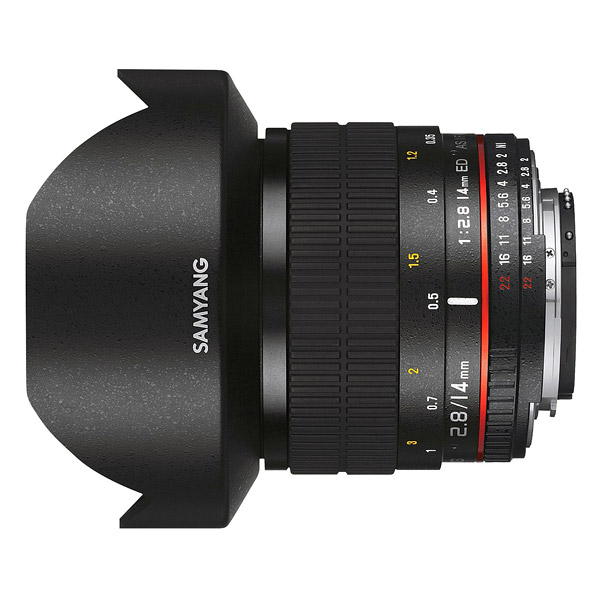 | Samyang 14mm f/2.8 IF ED UMC Aspherical Pros: Full Frame Compatible, Focal Length, Brightness Cons: Sharpness at the corners on Full Frame, fixed lampshade, not for everyone Opinion: I'm actually using the Cine version of this optics that is in all respects equal to the photographic one with the only difference of having the toothed gapps, that of the opening "decliccated" and the greater fire race. By its nature this optics introduces the distortions that are expected but easy to correct in post-production. Better to use this optics on machines with APS-C or Super 35mm sensors because on Full Frame it shows a marked loss of sharpness and detail at the edges associated with the type of elliptical optics that makes you lose focus right in those places. The mechanics are well made and the lampshade is fixed and not removable robust but if it breaks for some reason you will be forced to change the entire body of the lens (so treat it well this lens). All the talk about the use of ND filters and so on you have to accept it and know before the purchase as well as you have to have clear ideas about its use. It is unlikely that it will not be the optics that you will use the most, indeed, but when used intelligently and sparingly it is definitely a focal and related type of constructive appropriate and targeted. sent on September 09, 2019 |
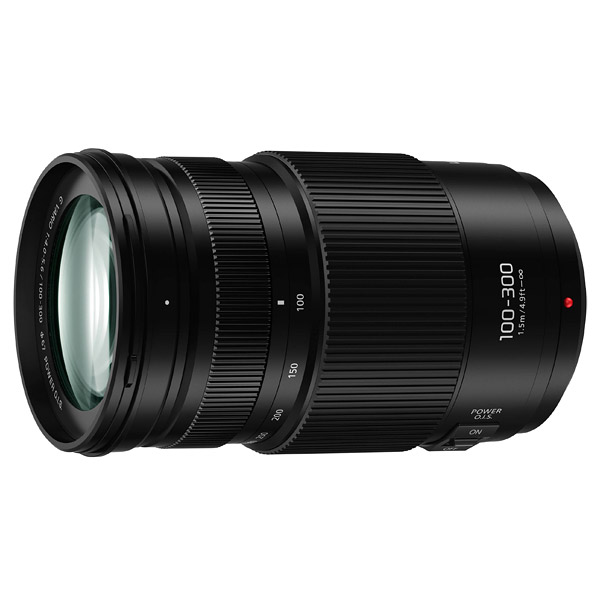 | Panasonic Lumix G 100-300mm f/4-5.6 II OIS Pros: Solution, incisiveness, chromaticity, vignetting, chromatic rendering, weight, size, anti-dust, protected by splashing water, also works at low temperatures, hood, stabilizer, fluidity of the zoom ring Cons: Lack of zoom lock (but not a problem), it adds up Opinion: When you buy an optic like this I already know what you are looking for and want, so I do not go into surplus descriptions. "This product left me literally astonished because I did not expect great results and instead I was literally" shocked " If I think about the current market value I'm even more surprised and you'll forgive me if I let you say that in my nourished optic park this is the best (subjective opinion). rnWe're sorry, I found a great lens resolution, incisiveness and an incredibly natural and pasty bokeh despite the seven blades of the diaphragm. There is no noticeable presence of chromaticity that for charity will be there but cropping the picture I can not see in any way and no focal length.rnThe vignetting is limited.rnEasy to describe is the chromatic rendering can not be due to the obvious (visually) treatment of the lenses or to others but the colors are faithful and acc es, do not turn them on the heat upThe cold. The "bellows" of the zoom I remember being dust-proof, sketch-proof and able to work at low temperatures has a gentle, hard, soft, gentle manual excursion that does not allow for a casual ride during use transport (there is no manual zoom block, but it does not work in this case) .rnThe image stabilizer is incredibly efficient considering the focal length and is a delight to use it.rnThis optic is equipped with its indispensable hood, weight and size transmitting a feeling of "balance" and practicality. "I'm absolutely convinced that this lens will give many satisfaction to anyone looking for an optical product in this focal range. sent on November 11, 2017 |
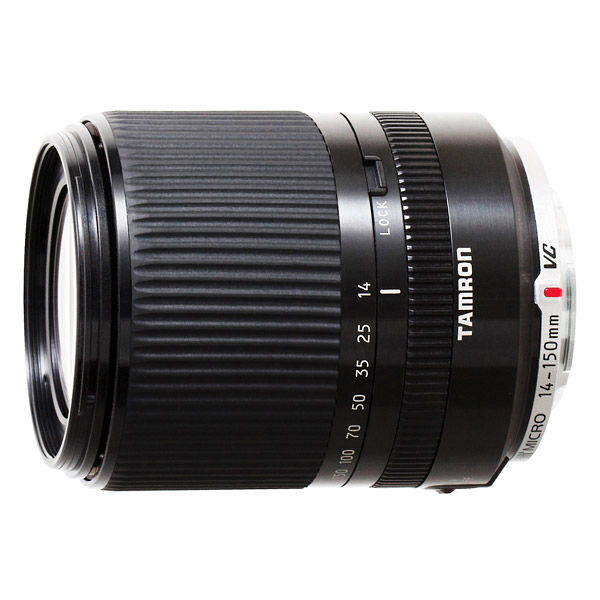 | Tamron 14-150mm f/3.5-5.8 Di III Pros: Zoom Lock; Practicality; Good quality optical; Construction; Filter size; Precise and silent AF; Supplied hood Cons: Not tropicalized; Not stabilized; Absence of a carrying case; Brightness (but not too) Opinion: I have combined this optic to a Panasonic Lumix GX-80 without any malfunction (with the latest firmware 1.2, both body and optics, total compatibility). The Panasonic Lumix GX-80 Panasonic Lumix GX- The GX80 has an excellent internal system that acts on the sensor and is handled properly with this combination. By having a "handy" optic and having a fairly wide focal length I would expect to see the presence of chromaticity and instead I was pleasantly surprised by the optical quality Of this Tamron.rnOther to maintain a good inconsistency of unknown phenomena marked with chromaticity (which is but is really contained), the lateral flare resistance is very good and the presence of the supplied standard hinge helps. If there is image distortion (Surely there) I know very little and the presence of the mechanical lock system of the zoom that prevents it from escaping during transport is a A buWhat you do. Mechanical construction is good considering the current cost and soft plastic ring guides are precise and comfortable to use. The size of the small filter makes sure that the cost of these accessories does not impact on a product rated "convenience of use" , Since it's a "do everything" thing. RnThere is no tropicalization but at that point the body machine should be. RnI am very pleased with this Tamron zoom for micro 4/3 systems but maybe I should say I'm very surprised at her Practical performance. sent on June 17, 2017 |
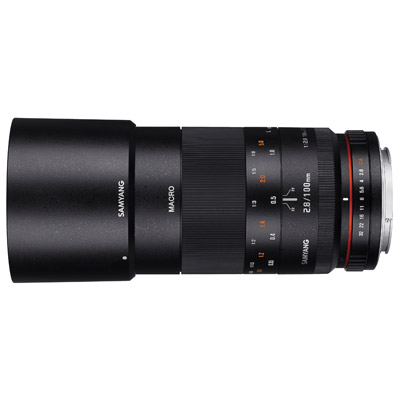 | Samyang 100mm f/2.8 ED UMC Macro Pros: Optical quality, construction, intenal focus, 1: 1 Cons: Absence of AF and stabilizer considering the cost and what the other brands offer (just wanting to find "counter") Opinion: I am one of those who is fully satisfied with the performance of this lens that offers a good quality and robustness. I think the words are of little use and talking will be the pictures but if I have to find fault with them (that they are not, in my This is because more or less at the same price (at least at this time) there are valid alternatives that do not need to be named.rnAll the The rest is "poetry", both in the macro and in the middle of the canvas, provided that you have the patience and the ability to know how to use it as it should. sent on May 04, 2017 |
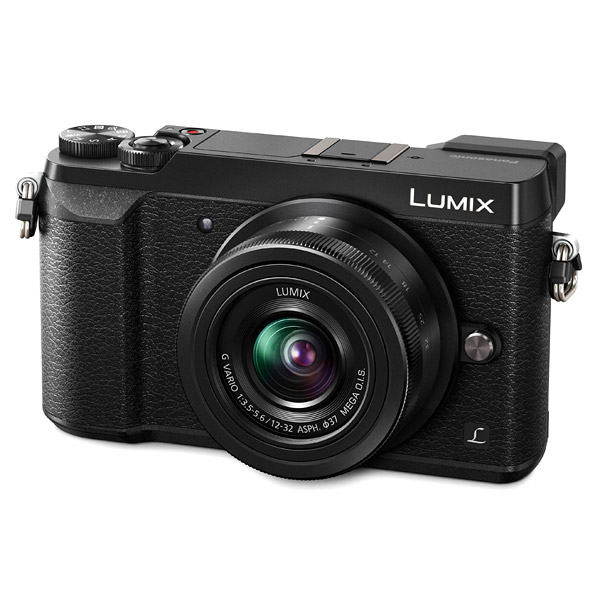 | Panasonic GX80 / GX85 Pros: video quality; stabilizer; compactness; Automatic WB; speed sequential shooting Cons: No MIC IN; screen is not 180 °; no tropicalisation; viewfinder; absence LOG Opinion: My opinion on this camera body is absolutely positiva.rnIn summary of the points that I have described as pros and cons they are already saying tutto.rnLa use frequently and every time "take home" some shots worthy of nota.rnLa practicality of a compact body and a good cost / performance ratio make that has become the machine that use with greater frequenza.rnPeccato for the lack of a higher quality viewfinder and the inability to rotate completely the principale.rnUn screen "murder" l ' the absence of a MIC iN jack seen the video quality department, despite the absence of profiles "flat" type of log. sent on April 27, 2017 |
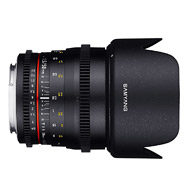 | Samyang 50mm T1.5 AS UMC Pros: rings management, bokhe, chromatic aberration, pasta, weight, size, Cons: infiltration of dust, slight distortion Opinion: Considering the nature "cine" in this context do not consider the absence of an AF system and against a paving thing applies to the absence of a stabilizer system ottica.rnGestire this optical non'è difficult thanks to the excellent functionality of well rings to rub and precise ring in comando.rnAberrazione chromatic contained, with excellent "pasta" which translates into detailed image but at the time when stretched soft richiesto.rnVignettatura moderate but present at all easy opening to eliminate totally closing at T2.0 , optics management also facilitated by not excessive weight and dimensions accettabili.rnIl optical path is bellows and slides in its seat, and that is why it is good to adopt now a 77mm filter to close the path being open and not sealed can easily collect dust and dirt that inevitably enters into the mechanical (is advice / precaution that personally I would give) .rnL'immagiit is really enjoyable, the bokhe subjectively I find good and closing the opening results are obtained slight distortion inaspettati.rnLa sharpness that you might encounter in certain situations is that congenital of these lengths focali.rnQuesto Samyang is a solid object, well done and especially functional .... hard to fault also thinking that makes no more competition in this cost range (at least currently) .rnLe nuts as some details are made of plastic but of excellent quality and robustness, somewhere they have had to do " economies "to reduce costs and decrease the peso.rnMi consider myself a happy owner of Canon variant. sent on April 25, 2017 |
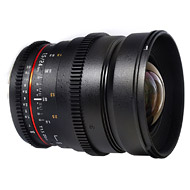 | Samyang 24mm T/1.5 ED AS UMC Pros: opening, optical scheme, focal length, distortion (the focal view) Cons: Precision ferrules and opening fire (some specimens), flare, chromatic, plastic ferrules Opinion: It returned easier to speak first of the problems with this view and state that non'è was the first lens Samyang I posseduto.rnIl my copy was suffering from a marked play (slack) of the focus ring that made him unmanageable accurately and fast in video.rnCome if not enough the aperture setting ring (opening) was not only inaccurate but also noisy which made the use of optics unfit for its scopo.rnTrà the focus ring and iris ring can not absolutely give a positive opinion for this version, everything was over the Mark2 improved in these frangenti.rnLa optical quality can not judge trà the best because plagued by lateral chromatic, flare (possibly physiological for these focal lengths) and a marked phenomenon of refraction to the depths field estreme.rnDopo two substitutions I found a correct specimen is mechanically and optically but it is fair to warn the buyer of those that could be the drawbacks of this film series dThe Samyang. sent on March 24, 2017 |
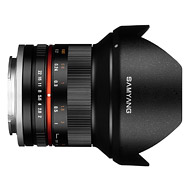 | Samyang 12mm f/2.0 NCS CS Pros: Size and weight, sharpness, brightness Cons: backlit performance, can give "habituation" Opinion: Before choosing this perspective I have read many reviews, both technical and those supplied by the users / clients. The quality-cost ratio is high but this I can only say now that I've got to try it. My version is matched with a body Panasonic / Lumix GX80 machine on which no backlash Bayonet / plug not known. The ring of fire system is manageable, not too hard but not too soft. Maybe I would have preferred a slightly wider / deeper ring but also goes so well. This combination, at least in my case, has proved successful in so far as known not so high a level of chromatism / overt as described by numerous tests (in which I believe, to point) and that indeed find rather content. The fire control system used by the GX80 (peacking focus in particular) is ideal to take advantage of optics such as this that over the whole offers a good brightness. The geometry of the image are well controlled, unknown obvious tendencies of "coloraction "of the image. The weight and size do not create any problem in practical use in every situation and nitidizza is very high on any field (in general). In backlight suffers a little bit of flare and the use of the lens hood is unavoidable (which seems only normal considering that we are talking about a wide angle.) the more the more it gives me pleasure to use ... which could cause problems when one needs to change perspective. "Remove it "from the camera body it will be really hard .... sent on February 10, 2017 |
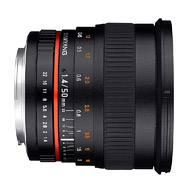 | Samyang 50mm f/1.4 AS UMC Pros: footprint; ring pleasant to use fire; detail / sharpness; chromatic aberration; bokhe; construction; brightness; colors Cons: AF absent; infiltration powder; slight image distortion; flare; Canon "challenging" Opinion: I do not want too much circled around, this non'è perspective "for all" in my opinion. It can give so much satisfaction as "frustration" if you are not aware of his "nature." Using it on Canon camera bodies, being completely manual type, can become very "challenging" for beginners or enthusiasts of photography, for those looking for the "click" stolen and immediate. I am sure that these "prerogatives" turn away many from this choice and I honestly think it's a real shame. To make the best use this perspective must be reflected on the shoot you want to do and you have to take all the time needed to prepare it. The focus ring is really valuable, perhaps less geared down because of its precision and although it helps to improve the "speed" in finding the proper focus you will find that this aspect can introduce inaccuracies and in turn take longer than you as3Buso. After this long "introduction" I speak a little optics. The pros and cons have not read them, but I want to focus on ease that dust from entering into the optical path as the optical complex at "bellows" non'è sealed up front that flows freely in the main diaphragm. I tried to compensate by using a good filter that considering the considerable size has a cost. The absence of AF is a "crime" given the results that I'm getting and the overall sharpness. Apart from a bokeh for a great perspective of this cost and a "colorimetry" hot which keeps "the imprint" Samyang impressed me how optically sincere. Chromatic aberrations are very contained. A slight image distortion is perceptible only if you look for and non'è annoying at all (is corrected in post production with ease, but I have not yet felt the need). Therevignetting I never considered a problem, and frankly I do not see a lot. When there is light side, even using the lens hood, known some flare on the image but nothing annoying. The building is great, the nuts are precise and easy to use. Weight and size I like a lot in conjunction with my setup. I took photos under certain conditions convey a sense of "magic" and in conjunction with the 6D and systems with Full Frame sensors conisdero it an attractive choice. Ultimately perspective from "amateurs", not a reference but a sincere and honest product that will "warm hearts" of those who will have the zeal to choose it. Not recommended for beginners or those who does not harbor any desire to have a thought and reasoned approach to photography. Not for all. Compared to the "fifty" Canon this offers much more but as against has no immediate learning curve / use because of a focusing system pleasant fire, but all too accurate. personalmente I initially just "adopted" and then make him the "prodigal son." It gets better at higher costs but I love it (and in the past I have also owned the Sigma 50mm F1.4 Art). sent on January 04, 2017 |
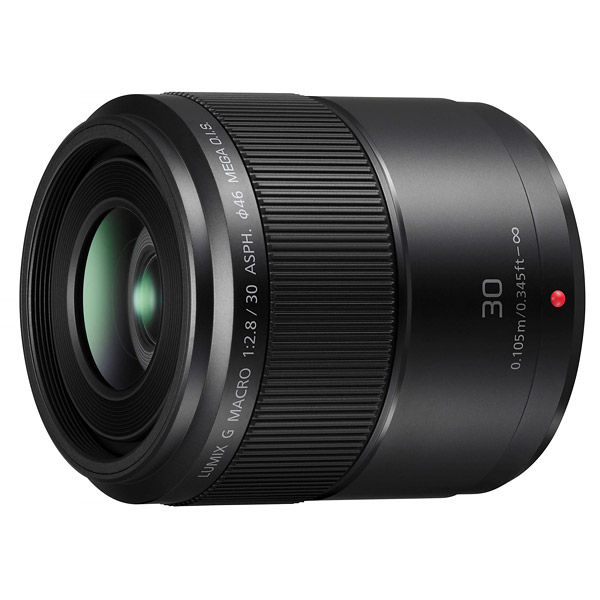 | Panasonic Lumix G Macro 30mm f/2.8 ASPH OIS Pros: Sharpness, chromatic correction, field correction, manual use, Macro, sufficient brightness, weight, dimensions Cons: auto focus not always precise, no tropicalized, no haze, flare, stabilizer Opinion: There are few things to say about this lens.rnTo take advantage of the dual stabilization on Panasonic machine bodies you have to upgrade with firmware 1.1 to climb and Dual IS2 from firmware version 1.2.rnThe optical stabilizer performs its function but with firmware 1.1 i do not has left completely satisfied (other products make much better) but since the release of the firmware 1.2 things have improved. rnThick incisiveness, chromaticity in all its shapes, crisp and offers a well laid out field without any distortion of the image. The macro function (1: 1) is really exploitable, subject to one centimeter of the lens being focused without problems but I can focus even when the subject hits the lens I have protected with a neutral filter.rn Applied to the Panasonic GX80 car body knows some hardness and slowness of the Auto Focus in the sense that often more efforts are needed to be able to reach the fire that once found is perfect (front / rear focus absent) .rn I also want to be lThis is the only optic I possess that has this behavior (Sigma 60mm F2.8 works better, for example). rn My impression is that since the GX80 is coming out of the box, there may be a form of non-perfect implementation the two units in fact with the firmware 1.2 seems to behave better but it is still "not perfect" from this point of view. The absence of tropicalization is a pity, but the weight and the total size contained make it go in the background I'm also looking at the great handling and "enjoyability" of using it in a manual way. My sample suffers from flare in backlight and / or light shining that I brilliantly solved using a rubber hood. The shots made with this optic, considering also l 'current commercial value, they are almost "magic." Ideal for those who want to get closer to MACRO photography without engaging very economically but not just. rnPiaceable in every respect, building and mate includedi.rn sent on September 27, 2016 |
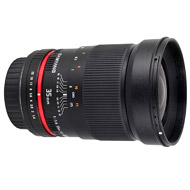 | Samyang 35mm f/1.4 AS UMC Pros: Detail / sharpness, contrast, bokeh, ergonomics, manual focus, cost / performance ratio, resistance to flare, chromatic content Cons: fixing ring hood and filters, dimensions, weight, not weather sealed Opinion: Despite other opinions, which shows the subjectivity of some factors, I find that the adoption of a focusing system manual focus emphasizes the pleasure of use and better the end result. The focal length of 35mm, moreover, are still unable to cope well even in manual thanks to a generous and precise focus ring fuoco.rnLa mechanical construction is good but I find questionable quality (plastic ring) located on the main body where it is applied to the lens hood and the inner edge which is screwed a possible filtro.rnQuesta "crown" is not too strong and the plastic tends to flex when put under pressure, may create some difficulties in the hood locking phases and my case has created some small discounts when screwing on the UV filter (but nothing as "striking"). rnDettaglio and sharpness are very good already just one stop away from F1.4, a value that has a blurred pasty and natural without create a great loss of detail on sog sent on May 09, 2016 |
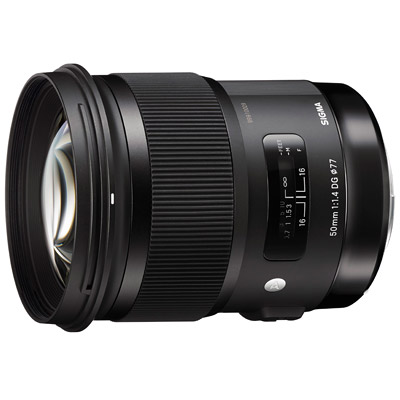 | Sigma 50mm f/1.4 DG HSM Art Pros: All those who are not against Cons: Optics unsealed, AF, Front / Rear Focus Opinion: I must not add anything to the lure made by other utenti.rnIl my copy, combined with a camera body EOS 6D, is plagued by marked Front Focus (+20 from +11 body or via software Sigma) .rnIl AF system non'è precise as would be expected, even in lighting conditions favorable, and even after the necessary adjustments via dock USB.rnSu Full Frame vignetting is present but nothing sensational for me non'è never been a problema.rnIl weight and bulk are absolutely bearable, we will soon learn thanks to the practice ring MAF and all 'good impugnatura.rnSe your camera body is equipped with battery grip the weight balance improves notevolmente.rnNel complex perspective is "busy", perhaps more suited to photographers seeds / Pro or Pro.rnHo encountered since the opening of the box (then brand new), the presence of several dust grains more or less body lying on the lenses inside the tube ottico.rnA my opinion the real flaw of this is that non'è tropicalizzato.rnThis fact has also occurred in the copy of one of my amico.rnConsiderando the pleasure of use I stà returning I'm really happy but I can not forgive the small deficiencies above. sent on February 03, 2015 |
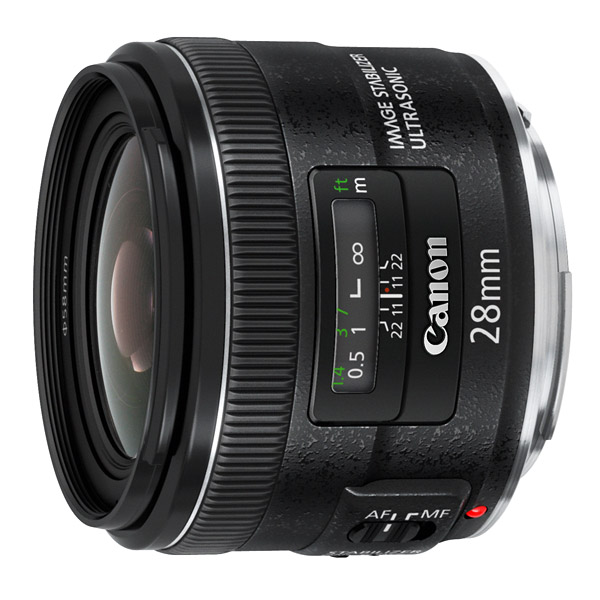 | Canon EF 28mm f/2.8 IS USM Pros: AF precise, weight, size, sharpness, chromatic, coma (APS-C), stabilized, bokeh Cons: cost lens hood, lens cap, AF noise, price (one time) Opinion: Quite compact and lightweight lens is a lens with a double personalità.rnA depending on the camera body is a Wide angle is not pushed on FF or a good "all-rounder" for almost 45mm on APS-C.rnOttima definition, no coloring and distortion of ' somewhat reduced picture are quite a "letter of introduction" for a wide angle is not pushed that also shows a bokeh altogether piacevole.rnBokeh "not easy" for short focal lengths and that despite the 7 diaphragm blades is credible and "enjoyable". rnIl its purchase price was really outrageous (and spends € 600) but now it is around 426 euro, certainly more "interesting." rnAccessorio indispensable as the hood, however, is not only optional but also expensive (50/60 euro original ). rnIl lens cap is really useless if you take the lens hood because it is "traditional" no "handles" side and internal ed'è also "slim". rnPer just over 5 euro is advisable to take the optional E-58II. RnIl stabilization system works very well (does not work miracles but it is useful), while the AF system ensures almost always a great set-fuoco.rnSistema not fast and not so silent but, to be honest, I've seen peggio.rnIl plastic body is a well-crafted and generally gives a nice feeling of "solidity". rnSulla EOS-550D is giving me great shots and great pleasure in the glass fotografare.rnNon will be "definitive" Bokeh with stratospheric but by definition, precision and cleaning image I find meraviglioso.rnNon I got to try it on a machine FF and I can not express an opinion in such circumstances. sent on October 14, 2013 |
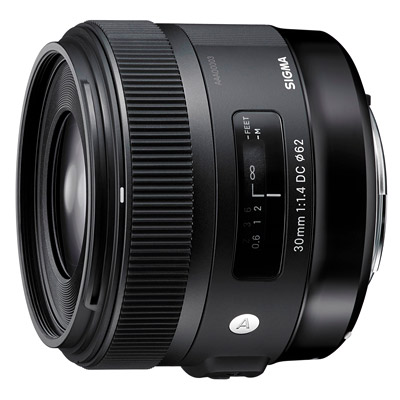 | Sigma 30mm f/1.4 DC Art Pros: construction, focus, brightness, standard equipment, bokeh Cons: longitudinal chromatic aberration (purple fringing), AF problems, coma evident Opinion: L 'longitudinal chromatic aberration is all too obvious and only F5 to get things improve, but the phenomenon rimane.rnLa considerable longitudinal chromatic aberration ruin the image by subtracting detail (on my camera body, Canon EOS 550D). RnSistema fast AF and silent but in practice it is far too slow to find the exact point of focus that often fallisce.rnUsando the manual focus it solves the problem that still does not justify a lens as questo.rnE 'all too evident even coma. .. . RNLA construction is very good as well as the allocation of serie.rnPer my Canon do not consider it good optics in fact I returned it as soon as I was possibile.rnNon I managed to solve the pronounced purple fringing even in post processing using the renowned software.rnE 'clear that my copy was suffering from some serious problem of alignment and quality of ottiche.rnConsiderando that other objectives "handyman" in my possession (on the lower paper in all) have behaved better, a real shame ( great delusione). rnMio father, who worked in film professionally for more than 30 years, has been "frozen". rnPer now I prefer to turn to other models (without making it a matter of the manufacturer), but I would not recommend this to a friend / a. sent on October 12, 2013 |
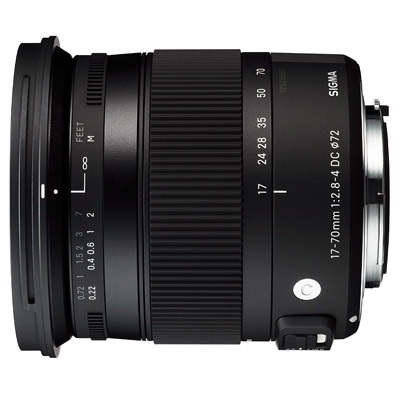 | Sigma 17-70mm f/2.8-4 DC OS HSM Macro C Pros: construction, definition, "macro" Cons: AF inaccuracy, vignetting, brightness Opinion: I state that I am not an expert in the field and not a professional photographer, but for more than thirty years I like to take pictures and shoot video (by other means) as a "family tradition". RnSono already have other lenses Sigma and Tamron and 'I decided to take this product for its practicality and convenience of utilizzo.rnLa its variable focal length (17-70mm) is well-suited to most uses of a photo amateur and brightness, on paper, should have been slightly greater than the concorrenza.rnLa version (C) is the latest model from Sigma able to interface with the USB adapter (which will be released later this year) which will make it possible to update firmware and set / fix / customize set-up problems fire, front and rear focus ... and altro.rnQuindi, an excellent investment from all points of view, especially considering the numerous cases of front or back focus of Canon camera bodies with optical Sigma.rnPer its nature "economic" use it on an EOS body that 550D.rnRilevo Fronto Rear focus are correct, the bokhe is very soft and manageable, the speed of the system focus is good and quiet but ... . RnForse my copy will not be out of the factory perfectly calibrated or has problems: rn * the auto focus (quick and silent) often fails the operation, making annoying click "quick" and requires a lot of patience; rn * in case of landscapes with uniform backgrounds the auto focus fails mercilessly; rn * brightness is below than I expected (honestly, comparing the Tamron or Sigma 17-50 is less bright) rn * with or without additional UV filters there are flare, as if the hood was "underpowered" (for wide angle?!) rn * suffers from a marked vignetting (corners) to the minimum and maximum focal length (the ends) while varying the diaframma.rnLa construction is solid and 'is well done, well manageable .. but to be honest personally is the lens that I was less satisfied in assoluto.rnNon can not exclude that it is aitem flawed or born "unfortunate" because by doing various tests with other camera bodies gave the same risultati.rnUna what is really appreciable, however, the "sharpness" of the focus when working and its "punch". rnRiesce to accurately select the subject leaving everything else out with a bokeh credibile.rnLa automatic management of the diaphragm, in my opinion, is "push" (forced) to maintain openings that provide greater brightness and then introduces himself very bokeh.rnSe this is how it works physiological would not recommend it to a person at the first armi.rnNon 'is easy to achieve precise shots to the "first shot" if the automatic setting is questo.rnNon' is an "immediate goal" for those looking for the "quick shot", bad for the occasional reporter (for example). rn (the article will be in my possession a flawed product or am I that I was expecting something more?! depend on the setup / factory settings correctable using USB d futureock station?). rnQuesto's it. sent on September 29, 2013 |
 JuzaPhoto contains affiliate links from Amazon and Ebay and JuzaPhoto earn a commission in case of purchase through affiliate links.
JuzaPhoto contains affiliate links from Amazon and Ebay and JuzaPhoto earn a commission in case of purchase through affiliate links.May Beauty Be Everywhere Around Me